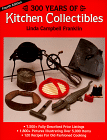
New Burner Unit to Revolutionize Way Cooks Prepare Meals
By Jim Bolton
FORT LEE, Va., (Army News Service, Feb. 12, 1999) -- What Army cooks have been waiting for for years may soon arrive at the doorstep of their Mobile Kitchen Trailers.
On Feb. 10, contract personnel from Teleflex Incorporated of Canada and Army officials conducted final testing of the new Modern Burner Unit used by Army cooks to prepare meals in the field. Teleflex was awarded a production contract in January for the fabrication of the MBU and its associated equipment.
The Modern Burner Unit will replace the older M2 burner. The new burner can be inserted beneath cooking racks in mobile kitchen trailers to prepare meals.
With the use of the Modern Burner Unit, the Army will be one step closer to its vision on having one standard fuel on the battlefield. The M2 burner traditionally has used gasoline as its fuel source. The Modern Burner Unit will use JP8, a kerosene-based fuel that burns cleaner and is less volatile than gasoline. JP8 is the Army's preferred fuel of choice, which may be used from aircraft to tanks in the 21st century. If all goes as planned, the first 9,000 Modern Burner Units will be distributed to units based on a Department of the Army priority list as early as March.
The Army is seeking funding at a level to maintain minimal production line operation. If this funding is available, the MBU will be fully fielded and replace the approximately 56,000 M2 burners in the Army inventory by the year 2015, according to Maj. Al Majewski, field feeding and subsistence project officer, Directorate of Combat Development for Quartermaster, U.S. Army Combined Arms Support Command.
Army cooks have been anxiously awaiting the distribution of the new Modern Burner Units for a number of reasons; time, safety, pollution prevention and the Army's desire for one fuel on the battlefield.
Traditionally, even before the old M2 burner could be used, cooks had to follow an exact 28-step procedure to light the burner at a minimum of 50 feet away from a mobile kitchen trailer. These 28 steps were very time consuming. Then it would take two cooks to carry the lit burner to the trailer for use.
When finished cooking, the burner had to be shut down and carried away from the trailer once cooled. The same 28 steps had to be followed again to re-light the burner for use again.
According to Majewski, prototypes, which preceded the MBU, were tested at various sites including Hohenfels, Germany. "The cooks loved it," he said, "especially the fact that they didn't have to get up in the middle of the morning, go out in the cold and have to perform all of the steps for use."
During the lighting process there was always a chance of fuel being spilled and/or ignited. Since 1980, there have been 90 incidents with 65 injuries and two fatalities recorded by the Army as a result of fires caused by the use of the M2 burner.
Reported costs associated with the M2 incidents over the past five years alone amounted to more than $500,000 -- enough to purchase 272 MBUs at a cost of approximately $1,100 each.
Because the new Modern Burner Unit can be lit in place within a mobile kitchen trailer, there is no need for soldiers to carry the burner, thus eliminating the chance of fuel spillage. And, the new Modern Burner Unit produces fewer emissions than the old M2 burner.
Chief Warrant Officer 5 Sam Galloway, Army food advisor, U.S. Army Quartermaster Center and School, also highlights the MBU's closed-circuit fuel system, which reduces the safety hazard by eliminating possible fuel spillage and reduces maintenance.
The MBU has an integral pump that draws fuel through a quick disconnect fitting located on the front of the unit. It is self-priming and can fill its two-gallon tank in two minutes. The unit ignites with the touch of button, and shuts down just as easily, with a firing range comparable to the M2.
The MBU was developed because there is a shifting by the Army in the terms of the way it wants to do business and the burner was developed to do things better, faster and safer, explained Raymond Malpocher, Teleflex Marine Division president.
Malpocher called safety the most important issue behind the creation of the MBU. "I think when we consider what the Army and the military services do for us and how critical and important it is, the one place we don't want any accidents is in the kitchen or any of the service areas," he said. "We heard there were some problems with the older design (M2) -- which is only natural because the older design has been around since 1959 -- the technology has certainly changed to update it and I think it's a tribute to the Army to be able to come up with such a modern unit."
Following Desert Shield/Desert Storm, the Army Chief of Staff changed the feeding policy from one prepared hot meal every three days to one per day.
"We need to use technology to help us get there," Majewski said. "We need to save some time in getting the burners ready for operation; use a more efficient burner. Also, with this new burner we'll be getting closer to the single fuel on the battlefield initiative which is using JP-8 ... we're getting everything that uses MOGAS out of the system."
(Editor's note: Bolton is a staff writer on the Fort Lee newspaper, The Traveller.)
| Bulletin Board | Keyword Search |
| Bookstore | Links |
| About Us | Recent Additions |
![]()

